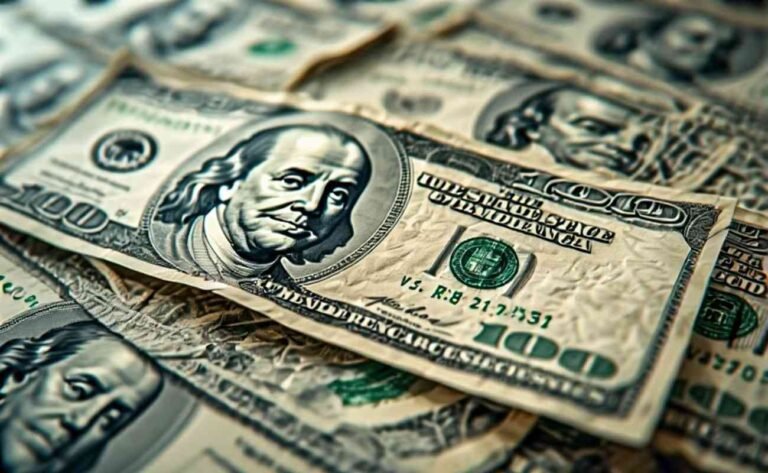$5000 DOGE Dividend: Complete Guide to This Potential Government Payout
The $5000 DOGE dividend represents a proposed financial relief measure tied to the Department of Government Efficiency (DOGE), an initiative led by Elon Musk and Vivek Ramaswamy under the Trump administration in 2025. This payout aims to return savings from federal spending cuts directly to American taxpayers, potentially offering $5000 per eligible household or individual as a one-time dividend. Originating from ambitious goals to slash $2 trillion in government waste, the concept has sparked widespread debate about its feasibility, eligibility requirements, and economic impact. While not yet enacted, it could provide significant support amid rising costs, but critics question if it will ever materialize given budgetary constraints and political hurdles.
If implemented, the DOGE dividend check would function like a rebate from efficiency gains, rewarding net taxpayers who contribute more to federal coffers than they receive in benefits. Proponents argue it promotes fiscal responsibility and shares prosperity, while opponents see it as a temporary fix that might fuel inflation or divert funds from essential programs. As of August 2025, discussions continue, with updates from sources like Musk’s endorsements and expert analyses highlighting both promise and pitfalls. For those tracking financial aid options, this guide breaks down everything you need to know, from qualification steps to potential timelines.
What Exactly Is the DOGE Dividend Program?
Let’s start by clarifying the basics. The Department of Government Efficiency, or DOGE, isn’t just a catchy name inspired by Dogecoin—it’s a real advisory body tasked with identifying and eliminating wasteful spending in the U.S. government. Announced in late 2024, DOGE targets trillions in savings through audits, contract terminations, and streamlined operations.
The $5000 dividend idea emerged as a way to distribute a portion of those savings back to citizens. Elon Musk publicly supported it in February 2025, suggesting it could incentivize workforce participation and boost consumer spending. However, it’s still in the proposal stage. For instance, one early plan floated giving 20% of savings to debt reduction and another 20% as citizen payouts.
To put this in perspective, imagine the government as a massive corporation. DOGE acts like a cost-cutting consultant, and the dividend is your shareholder bonus. But unlike corporate dividends, this one depends on congressional approval and economic conditions.
Key Features of the Proposed DOGE Payout
- Amount: Typically discussed as $5000, though some sources suggest it could be less based on actual savings achieved.
- Funding Source: Derived from federal budget cuts, such as terminating inefficient contracts listed on fpds.gov.
- Purpose: To offset inflation, encourage tax compliance, and demonstrate government accountability.
- Timeline: If approved, payments might start in 2026 via tax refunds or direct deposits.
- Administration: Handled through the IRS, similar to past stimulus distributions.
Additionally, experts like those at Newsweek have analyzed the math. They estimate funding a full $5000 per eligible household could cost $395 billion—far exceeding current DOGE savings projections. This raises questions about scalability.
Eligibility Criteria for the $5000 Government Efficiency Check
Qualifying for this potential relief isn’t automatic. Based on proposals, it focuses on net taxpayers—those who pay more in federal income taxes than they get back in credits or benefits. This excludes many low-income households, welfare recipients, and non-filers.
For example, if you’re a working professional filing taxes annually, you stand a better chance. But details remain fluid. Here’s a breakdown in list form for clarity:
- Must Be a U.S. Citizen or Legal Resident: Undocumented individuals won’t qualify.
- Income Thresholds: Likely aimed at middle-class earners; high earners might face phase-outs.
- Tax Filing Status: Requires having filed recent returns showing net positive contributions.
- Exclusions: People on full government assistance, minors, or those with outstanding tax debts may not receive it.
- Household vs. Individual: Some plans suggest per household, while others propose per adult taxpayer.
To check your potential status, review your last tax return. If you owed money after deductions, you’re probably in the running. However, as Scott Santens noted in his analysis, this isn’t universal basic income—it’s a targeted rebate.
Potential Eligibility Scenarios
| Scenario | Likely Eligible? | Reason |
|---|---|---|
| Single filer earning $50,000, paid $3,000 in taxes | Yes | Net contributor with moderate income. |
| Family of four on welfare, no taxes paid | No | Receives more benefits than pays in. |
| Retiree on Social Security, minimal taxes | Maybe | Depends on if they file and show net payment. |
| High-earner over $200,000 | Partial | Possible phase-out to prioritize middle class. |
| Non-filer or tax evader | No | Must have compliant records. |
This table illustrates how the program might work, drawing from similar past rebates. Remember, these are estimates—official rules would come from the IRS if enacted.
How to Track Your DOGE Savings Payout Status
Staying informed is key. Unlike automatic deposits, this would require active monitoring. First, visit the official DOGE website for updates on savings trackers. They post terminated contracts monthly, giving clues about available funds.
Next, use IRS tools. If it rolls out as a tax credit, check your account on IRS.gov. For real-time news, follow credible sources. I recall during the COVID stimulus rounds how people refreshed portals daily—expect similar anticipation here.
Steps to Prepare for Potential Payment
- File Your Taxes Early: Ensure your 2025 return is submitted by April 2026 to qualify.
- Update Banking Info: Direct deposit speeds things up; verify details with the IRS.
- Monitor Legislation: Watch for bills in Congress that mention “DOGE dividend” or “efficiency rebates.”
- Avoid Scams: Beware of fake sites promising checks—official info comes from .gov domains.
- Calculate Your Share: Use online estimators based on your tax bracket.
Additionally, join forums like Reddit’s r/BasicIncome for community insights. Users there debated the $5000 figure extensively in early 2025.
Potential Impacts of the $5000 Efficiency Dividend on Your Finances
This payout could be a game-changer for many. Imagine using it to pay down debt or invest. Yahoo Finance suggested applying it to credit cards, where Americans hold over $1 trillion in balances.
However, economists warn of inflation risks. Forbes detailed how mass distributions might drive up prices, similar to post-pandemic effects. On the positive side, it could stimulate local economies.
From my perspective, I’ve seen friends use stimulus funds wisely during tough times—like starting side hustles. This could do the same, but plan ahead.
Pros and Cons List
- Pros:
- Provides immediate relief amid high living costs.
- Encourages government transparency.
- Boosts consumer confidence.
- Cons:
- May not reach those who need it most.
- Could add to national debt if savings fall short.
- Temporary; doesn’t solve systemic issues.
For broader context, compare it to other relief programs. Check out this fourth stimulus check guide for similarities in distribution methods.
Comparisons: DOGE Dividend vs. Other Financial Relief Options
Not all aid is equal. The DOGE proposal stands out for its efficiency focus, but how does it stack up?
DOGE Dividend vs. Similar Programs
| Program | Amount | Eligibility | Funding | Status (2025) |
|---|---|---|---|---|
| DOGE Dividend | $5000 | Net taxpayers | Government cuts | Proposed |
| COVID Stimulus (2021) | Up to $1400 | Income-based | Borrowing/printing | Completed |
| Tariff Rebate Checks | $600-$2400 | All citizens | Tariff revenue | Under discussion |
| Social Security COLA | Varies (2-3%) | Beneficiaries | Payroll taxes | Annual adjustment |
This comparison shows DOGE’s unique tie to savings. For more on tariff rebates, see Newsweek’s breakdown in their DOGE dividend cost analysis.
Common Myths About the $5000 DOGE Rebate Debunked
Misinformation spreads fast. Let’s clear up some.
- Myth 1: Everyone gets $5000 automatically. Fact: Only qualified taxpayers.
- Myth 2: It’s funded by Dogecoin. Fact: Named after it, but uses fiat dollars.
- Myth 3: Payments start immediately. Fact: Likely 2026 at earliest.
- Myth 4: It’s a scam. Fact: Legitimate proposal, but verify sources.
- Myth 5: No taxes on it. Fact: Might count as income; consult a tax pro.
You might wonder if this is too good to be true. Honestly, with political gridlock, it could fizzle. But staying educated helps.
Expert Opinions on the Government Savings Dividend
Analysts are split. James Fishback, the proposal’s originator, calls it a “win for Americans.” Musk echoed this, saying he’d “look into it.”
Conversely, critics like those on Axios argue the $2 trillion savings goal is unrealistic. A Reddit user quipped it’s “another empty promise.”
For deeper reading, explore DOGE dividend details on Forbes for balanced views.
Future Outlook: Will the $5000 Payout Happen?
Predictions vary. If DOGE hits targets, yes. But budget battles loom. Monitor updates quarterly.
In the meantime, explore alternatives like state rebates or federal refunds.
How to Maximize Benefits If You Receive the DOGE Check
If it arrives, use it smartly.
Investment Ideas List
- Debt Reduction: Pay high-interest loans first.
- Emergency Fund: Build three months’ savings.
- Home Improvements: Energy-efficient upgrades for tax credits.
- Education: Fund courses or certifications.
- Investing: Consider low-risk options like index funds.
Frequently Asked Questions About the Efficiency Payout
- When will payments be issued? Possibly with 2026 tax refunds.
- How do I apply? No application; automatic for qualifiers.
- What if I’m retired? Depends on tax status.
- Can it be garnished? Likely for debts like child support.
- Is it taxable? Probably yes, as miscellaneous income.
Wrapping Up: Stay Prepared for Potential Relief
The $5000 DOGE dividend offers hope for financial breathing room, but patience is essential. Keep tabs on developments, file taxes diligently, and diversify your planning.







